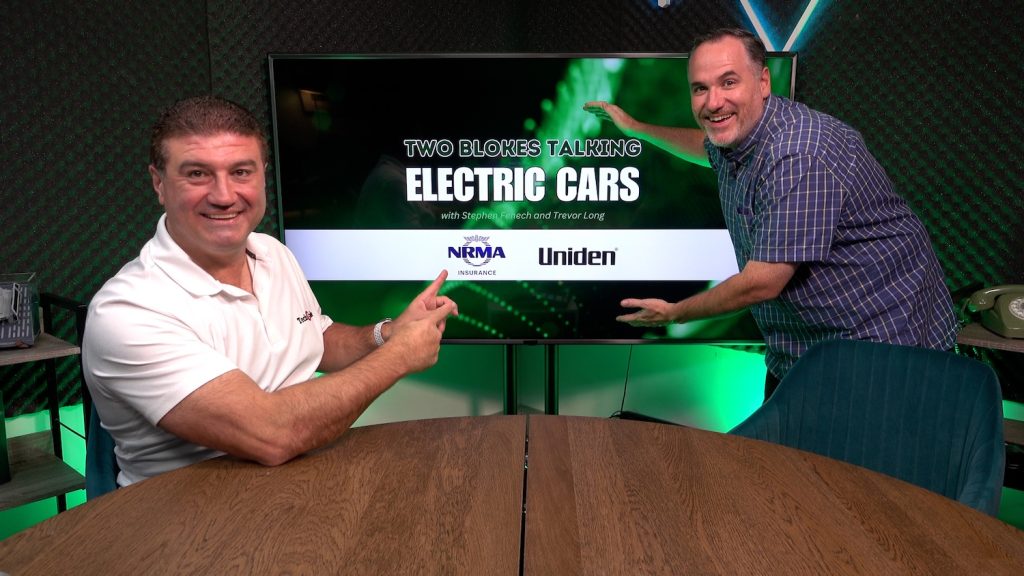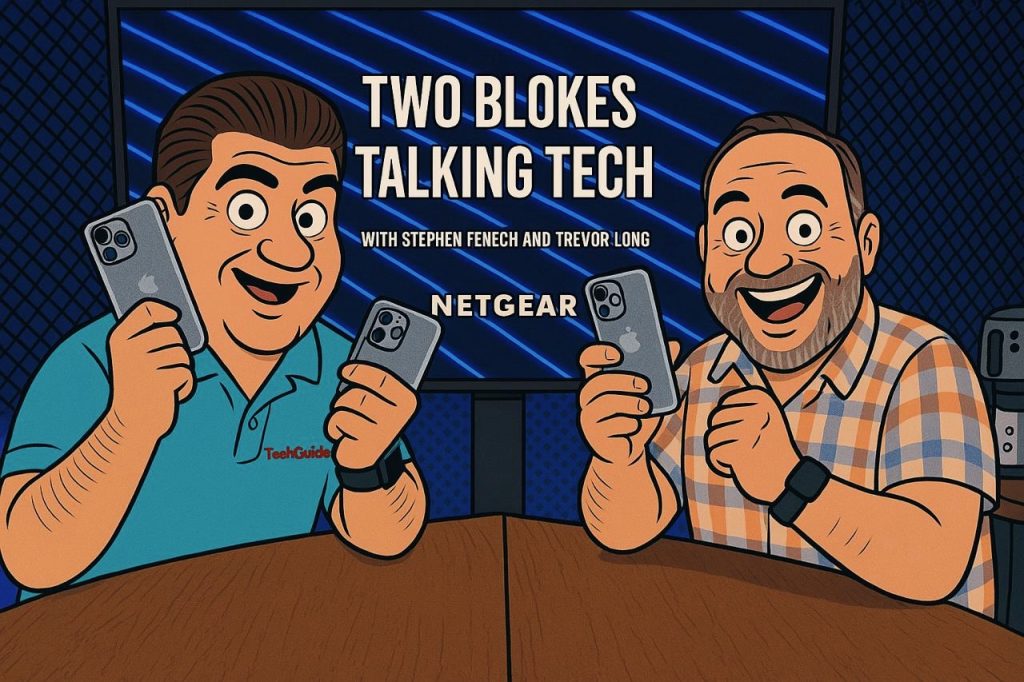- RATING
The Samsung S95F OLED is a remarkable TV and showcases how you can create a truly amazing experience when you combine outstanding screen technology and picture quality with performance, AI and design.
The Samsung 2025 range of OLED TVs have gone to another level with an AI-powered processor, improved brightness and the exceptional Anti-Glare technology.
Tech Guide looked at the 83-inch and 77-inch Samsung OLED S95F. They were set up for us in in a large hotel suite in the Sydney CBD.
The TVs were place beside large windows and downlights but the TVs showed hardly any reflection that would usually mar the viewing experience.
The Samsung OLEDs are also available in 55-inch and 65-inch.
But most of the interest from Australian customers is for the larger screen sizes.
In fact, in Australia TVs 85 inches and larger is the fastest growing area for TV sales.
Interestingly, Samsung has decided to release its OLED range before its popular Neo QLED models which will appear in stores in coming weeks.
Since re-entering the OLED market Samsung has been making year-on-year improvements and this year have met those expectations once again.
And not only is the Samsung OLED TV better it’s also thinner as well with barely-there bezels so you’ve got nothing but the amazing picture to look at.
It really is extraordinary that a TV of this size can be so thin. The 83-inch model is 12.6mm thick while the 77-inch is just 11.2mm thick.
At these svelte sizes, the Samsung OLED are ideal for mounting that will put them flush to the wall.
The thin design is the result of having no need for a backlight because the OLED pixels are self-illuminating – they are either on or off.
That also explains why OLED can produce such pure inky blacks – they don’t have a backlight to turn off or block.
And Samsung is also cautious about the one weakness of the OLED technology – the possibility of burn in.
Today’s OLEDs are far better than the panels produced years ago and have features built-in that will prevent this from happening.
It was once an issue if you’re a regular viewer of shows that had a watermark in one of the lower corners.
An older OLED model would retain the outline of that watermark and it would be present on anything else you watch.
But that can’t happen today with Samsung’s OLEDs because they have built in a few safety features.
For example, none of Samsung’s Ambient mode screensavers are static – they are always moving.
Even on the home menu screen Samsung keeps things moving thanks to a subtle and nearly imperceptible feature that jogs any static images – including the home menu – a few pixels side to side and up and down.
You’ll also notice if you pause the movie or TV show you’re watching – after a few seconds the screen will put up a screensaver.
As it’s name suggest the screensaver moves around the panel to protect it from the risk of burn in.
These features are there to protect the screen so the reality is you couldn’t get burn-in on the Samsung OLED if you tried.
Under the hood is the NQ4 AI Gen3 Processor with 128 AI neural networks – and that’s also a jump up from last year’s Gen2 chip.
The latest processor also does the heavy lifting when it comes to 4K upscaling and real time image and audio optimisation whether you’re watching streamed content, live sport or playing a game.
We watched 4K content on Netflix and Disney+ and the picture was flawless.
That’s due in part to the onboard AI which allows users to create what they see to be better picture quality.
In AI Mode you can choose the best quality for watching movies, sport and general viewing.
In each of these modes users are taken through a series of screens to select what they consider to be the best in terms of brightness, contrast, colour and colour tone.
Picture quality is very subjective so this process helps the Samsung OLED deliver precisely what you want no matter what you’re watching.
Brightness has also been improved year on year by an impressive 30 per cent.
Because OLED doesn’t include backlight one weakness the format had was matching the brightness of an LED TV.
We’ve seen other brands use brightness on their LED TVs to disguise the picture’s shortcomings.
But Samsung had nowhere to hide with its OLEDs.
Achieving an additional 30 per cent brightness was a huge achievement but it’s used to make an already powerful and strong image even better.
The other major feature is Samsung’s Glare-Free technology which was introduced on last year’s model and is being brought forward not only to the 2025 OLED range but to Samsung’s two Neo QLED 8K models and one Neo QLED 4K model.
We viewed the 83-inch and 77-inch OLEDs in a hotel room that had large windows and bright down lights and it didn’t intrude one bit.
The coating on the screen manages to diffuse any light rather than reflecting it back at the viewer.
Throughout our entire review session it was like the windows didn’t exist.
We were truly impressed with the picture quality which had a great foundation thanks to those incredible black levels which were backed by natural and accurate colour and skin tones.
Even watching fast paced action or sport there was minimal motion blur or juddering.
And when watching HDR content we were treated to every possible detail that was in darker areas while also not missing out on anything even in the brightest area of the screen.
This all comes back to the processor that analyses data within the high dynamic range content and then tasks the quantum HDR OLED pro to make those details even more visible.
The HDR brightness optimizer also lends a hand to bring out those hidden details and provide impressive contrast even in the brightest viewing environments.
If you’re a gamer, the Samsung OLED is an awesome venue with up to 165Hz VRR (variable refresh rate) up from 144Hz with support for HDMI 2.1 so users can enjoy peak performance.
And AI also kicks in here with Auto Game Mode which can detect the sort of game you’re playing and optimise the settings to improve its performance.
And there’s also ALLM (auto low latency mode) which will adjust the latency setting so there is little to no input lag for your game.
On the audio side, it was quite impressive but it did require the addition of a Samsung soundbar to really improve the whole experience.
On its own the Samsung OLED has decent sound.
But when you’re paying this kind of money for a TV it will be disappointing to many to think you’ll still need to spend more on a sound bar to get the most out of it.
OK, so now let’s address that price.
These new Samsung OLED TV’s are not cheap. The 83-inch model is priced at $11,499 while the 77-inch will set you back $9,199.
Granted these are recommended retail prices so what you find in stores could easily be thousands of dollars cheaper.
Now these are the top of the range models with two other OLED series also available at a cheaper price.
The TVs we looked are top of the line with every possible new feature included and the performance to match.
Asking someone why they would buy this would be like asking a driver why they would buy a Ferrari.
It offers quality, performance and has a stunning design.
And the second you sit down in front of it, you’ll understand you’ve entered a whole new class of entertainment.
VERDICT
The Samsung S95F OLED is a remarkable TV and showcases how you can create a truly amazing experience when you combine outstanding screen technology and picture quality with performance, AI and design.
















